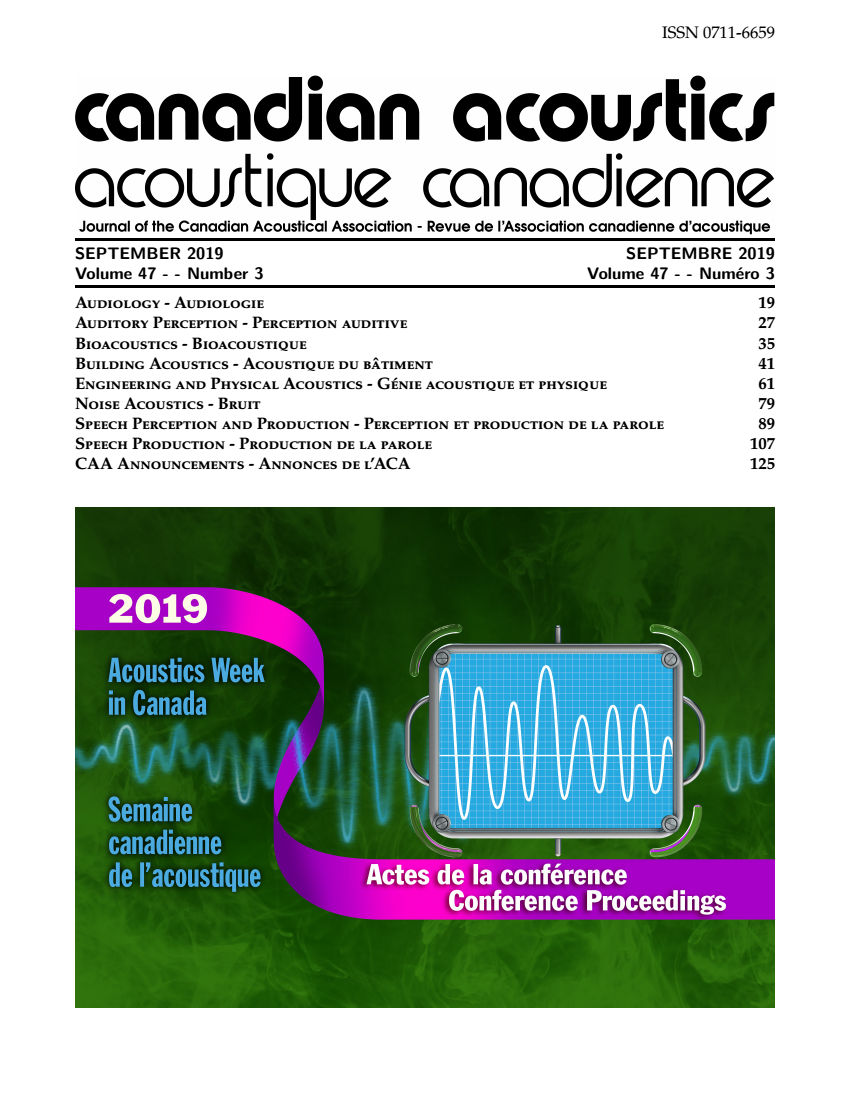Spectral Moments to Describe Fricative Emergence of French-Quebec Children
Abstract
Introduction
In the study of fricatives, various acoustic measurements have been described to objectify the classification of these consonants. One of the measures most used is the analysis of spectral moments. There are four spectral moments used to describe these patterns: center of gravity, standard deviation, skewness and kurtosis. The acquisition of fricative consonants is well documented in English-speaking children. However, studies conducted in languages other than English, such as Japanese, have revealed differences in the order of acquisition of these consonants. These differences would indicate that some phonological development trends are specific to each language and, consequently, the English data may not be sufficiently sensitive to evaluate the phonological development of non-English-speaking children. In this study, we aim to obtain acoustic measurements that describe the phonetic-phonological development of fricative consonants in French from Quebec.
Methods
This cross-sectional study is developed on the data of 47 children, from Quebec City. The children's productions of the fricatives were obtained through a picture naming task. The observations were labelled and transcribed phonetically, with a double entry of 10% of the corpus.
Results
The analysis by mixed models show an effect of the point of articulation on the center of gravity and on the duration. The analyses showed an effect of the point of articulation on the standard deviation. An effect of the voiceless on the center of gravity and on the duration is also observed. Finally, there is an effect of age on duration.
Discussion
Preliminary results indicate that the center of gravity is the most robust spectral moment to classify the fricative consonants of preschool children, which coincides with previous literature. On the other hand, duration, a measure often described as secondary, appears to be a relevant indicator for the classification of fricative consonants of francophones children of Quebec.
Additional Files
Published
How to Cite
Issue
Section
License
Author Licensing Addendum
This Licensing Addendum ("Addendum") is entered into between the undersigned Author(s) and Canadian Acoustics journal published by the Canadian Acoustical Association (hereinafter referred to as the "Publisher"). The Author(s) and the Publisher agree as follows:
-
Retained Rights: The Author(s) retain(s) the following rights:
- The right to reproduce, distribute, and publicly display the Work on the Author's personal website or the website of the Author's institution.
- The right to use the Work in the Author's teaching activities and presentations.
- The right to include the Work in a compilation for the Author's personal use, not for sale.
-
Grant of License: The Author(s) grant(s) to the Publisher a worldwide exclusive license to publish, reproduce, distribute, and display the Work in Canadian Acoustics and any other formats and media deemed appropriate by the Publisher.
-
Attribution: The Publisher agrees to include proper attribution to the Author(s) in all publications and reproductions of the Work.
-
No Conflict: This Addendum is intended to be in harmony with, and not in conflict with, the terms and conditions of the original agreement entered into between the Author(s) and the Publisher.
-
Copyright Clause: Copyright on articles is held by the Author(s). The corresponding Author has the right to grant on behalf of all Authors and does grant on behalf of all Authors, a worldwide exclusive license to the Publisher and its licensees in perpetuity, in all forms, formats, and media (whether known now or created in the future), including but not limited to the rights to publish, reproduce, distribute, display, store, translate, create adaptations, reprints, include within collections, and create summaries, extracts, and/or abstracts of the Contribution.


